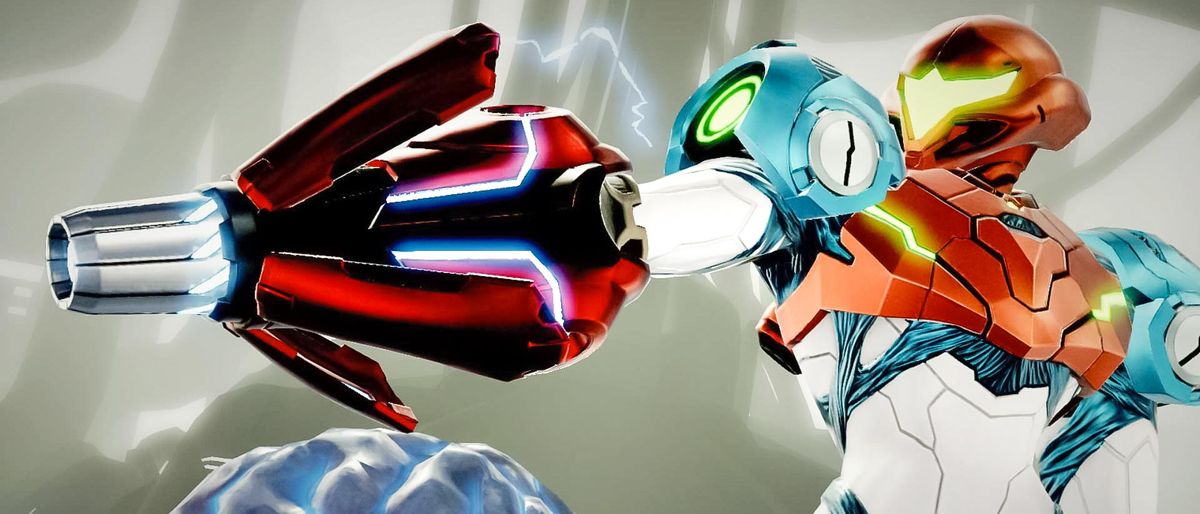Tom's Guide Verdict
Metroid Dread meets — and arguably surpasses — its lofty expectations, with demanding gameplay, clever level design and an ambitious story.
Pros
- +
Tight, challenging gameplay
- +
Varied, atmospheric world
- +
Story ties together past Metroid games
- +
Excellent showcase for Switch OLED
Cons
- -
Punishing boss fights
- -
Certain upgrades feel frustrating to find
Why you can trust Tom's Guide
Platforms: Nintendo Switch
Price: $60
Release Date: October 8, 2021
Genre: Action/adventure
Metroid Dread is a game that’s almost 15 years late, and yet it feels timelier than ever. Just as The Legend of Zelda: Breath of the Wild stripped a well-worn formula down to its fundamentals and delivered something fresh, so too does Metroid Dread show us that when it comes to side-scrolling action games, less can be more.
Metroid Dread is light on story, light on dialogue, light on tutorials, light on direction and light on helpful hints. In the very first level, you’ll hit the ground running, and have to conquer almost every inch of the deadly Planet ZDR using only your own wits, and a series of vague directives. But rather than constraining, this stripped-down approach feels liberating. There’s nothing to do in Metroid Dread except to explore the gorgeous world, puzzling your way past each obstacle you encounter. It’s the Metroidvania formula at its purest — which is no surprise, when you remember that Nintendo pioneered the genre.
For the most part, playing Metroid Dread is like revisiting a dear old friend. And, like many old friends, some of Metroid’s bad habits are still intact. Boss fights are still incredibly punishing, and demand a level of twitch-reflex perfection that the rest of the game simply doesn’t. And, much like previous games, some of Samus Aran’s upgrades are hidden so well, they’re nearly impossible to collect without a guide.
Otherwise, though, we’ve waited a long time for this game, and gratifyingly, it’s worth the wait. Read on for our full Metroid Dread review — and if you've already finished playing, check out our list of the 10 best games to play after Metroid Dread.
Metroid Dread review: Gameplay
The Metroid series is 35 years old, and spearheaded a whole game genre named in its honor. However, if you have never played a Metroid game before, then Metroid Dread is as good an introduction as any. You play as intergalactic bounty hunter Samus Aran, who has explored all sorts of hostile planets and space stations, fighting off a variety of predatory native fauna, space pirates and bioengineered killing machines along the way.
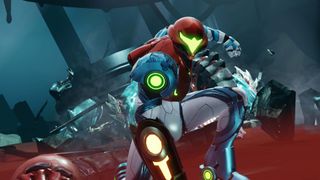
Like most Metroid games (save for the first-person Metroid Prime spinoffs), Metroid Dread is a side-scrolling action game with a big focus on exploration. At first, Samus can run, shoot, fire missiles, parry melee attacks and not much else. It’s worth pointing out that Metroid Dread gives Samus the ability to slide under obstacles for the first time. It’s a worthwhile addition to her arsenal, and helps facilitate a few exciting escapes throughout the game.
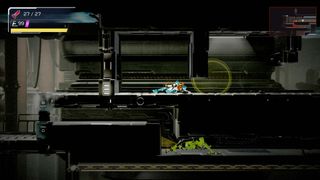
As she explores the eight different areas of the expansive Planet ZDR, however, Samus picks up a variety of new abilities. By the end of the game, she’ll be able to charge her beam cannon, fire multiple shots at once, curl up into a tiny Morph Ball, double-jump, turn invisible, grapple across chasms and even plant devastating bombs that destroy just about everything onscreen.
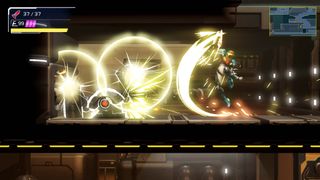
Most of these upgrades are familiar from previous games. In terms of new moves, some additions are better than others. An instantaneous dodge and a wall-climbing magnet open up new gameplay opportunities in almost every level. A personal cloaking device, on the other hand, opens up a handful of locked doors, and doesn’t do much else.
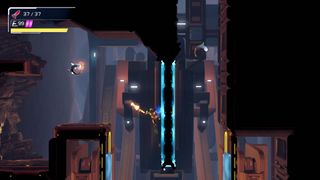
What struck me most about Metroid Dread as I played was just how little the game holds your hand — and just how intuitive navigation feels, anyway. Your suit’s built-in computer, ADAM, will sometimes give you vague objectives, but it doesn’t dispense hints or force you down a certain path. The game is a master class in game design that subtly leads you to your next objective without ever telling you explicitly where to go.
Each new ability can get you past a different kind of obstacle, which almost invariably leads to a room you haven’t explored before. There’s no “wrong” path to take — sooner or later, you’ll get where you’re going, find another unlockable ability, and repeat the whole virtuous cycle again. Metroid Dread is a quiet, atmospheric game that’s easy to get lost in for hours on end.
The only downside here is that certain hidden upgrades — for health, missile capacity and so forth — are ridiculously unintuitive. Most upgrades ask you to solve a simple puzzle or two, but a handful of items require pitch-perfect platforming, exploring seemingly unconnected areas or simply bombing every nearby surface in the hopes that something clicks. It’s a potentially frustrating, time-consuming process for completionists.
Metroid Dread: E.M.M.I. sections and boss fights
Another new addition in Metroid Dread are the E.M.M.I. robots: scientific research automatons that have gone amok and started hunting Samus. As you explore Planet ZDR, you’ll occasionally come across an area where the screen goes a bit gray and grainy, and a red dot will show up at a distant point on your map. In these crucibles, Samus must evade an E.M.M.I. and hunt down a special resource called Omega to take them down.
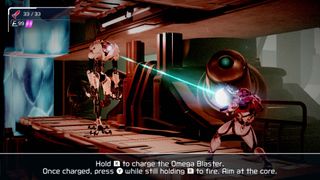
The E.M.M.I. sections can be both exhilarating and frustrating. Narrowly escaping an E.M.M.I.’s clutches or setting up the perfect ambush as one closes in on you are some of the most exciting moments in Metroid Dread. But more often, you’ll blunder into an E.M.M.I., find yourself unable to escape, and have to start the whole section over. What’s intense and terrifying the first time can get tiresome by the tenth.
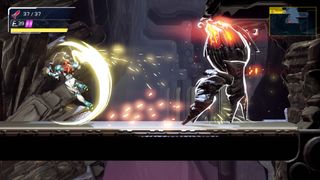
Similarly, while most of Metroid Dread has a chill-but-challenging vibe, that all changes when you encounter one of the game’s dozen or so bosses. These adversaries, which range from enormous sea creatures to agile robotic soldiers, can all obliterate Samus’s health bar in only a few hits, and require split-second perfection to dodge attacks and exploit weaknesses. They’re satisfying to defeat, but they’re also punishing in a way that feels at-odds with the rest of the game.
Metroid Dread review: Story
Metroid Dread is one of the more narrative-driven games in the series, but never in a way that conflicts with the lonely, minimalistic ambiance. After wiping out both the galaxy-threatening Metroids and Parasite X in previous games, Samus finds herself bound for the remote Planet ZDR, where a lone Parasite X may still exist. There, she encounters the impossible: a warrior from the supposedly extinct Chozo race, who seems to want her dead.
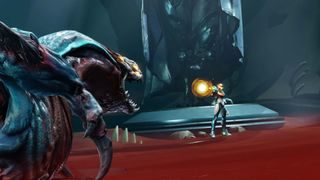
Metroid Dread weaves in a ton of series backstory, from Samus’ struggles against the Metroids, to her own personal history of being raised by the Chozo. Newcomers may not grasp the finer points of the plot, but the broad strokes are pretty comprehensible: Planet ZDR is dangerous, and Samus has to escape before her pursuer hunts her down. Later in the game, there are some pretty dramatic twists, but by then, even Metroid neophytes should feel sufficiently invested in Samus’ survival.
Metroid Dread review: Visuals and sound
While the Nintendo Switch is starting to show its age next to competitors like the PS5 and Xbox Series X, Metroid Dread’s art style goes a long way. Planet ZDR has a variety of gorgeous environments to explore, from the foreboding caverns of Artaria, to the lava-filled passageways of Cataris. Before her adventure is out, Samus will explore frozen wastelands, underground forests and ruined fortresses, each one with a different color scheme, level design and set of enemies. Metroid Dread is hard to put down, if only because you never know what you’ll see next.
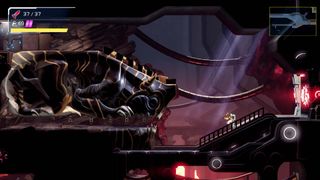
The music is likewise an agreeable mix of ambient background tunes for exploration, with more urgent techno beats for big battles and chases. There’s not much voice acting to speak of, but the sound effects work well, from the ping of a single arm cannon shot, to the roar of a deadly scorpion beast.
It’s worth mentioning that one way to take advantage of Metroid Dread’s strong visuals and sound is to play the game on a Switch OLED. Metroid Dread and Nintendo’s newest console variant both launch on the same day, and it’s easy to see why. An OLED screen accentuates the game’s deep blacks and vivid reds, while the console’s improved speakers can keep you immersed without headphones.
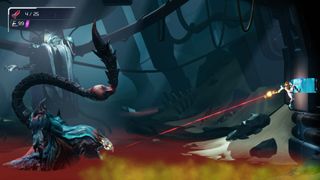
To be clear, I don’t think the Switch OLED is necessarily worth buying if you have a base-model Switch. But if you’re going to get a Switch OLED anyway, Metroid Dread is the game you should get with it.
Metroid Dread review: Verdict
In a way, it’s remarkable that it took Metroid Dread so long to come out. After a few minutes with the game, I felt all the old habits coming back — running and free-aiming at the same time, checking every nook and cranny for hidden upgrades and obsessively checking the map to see if there was a tiny doorway somewhere that I’d left unopened.
As Metroid games go, I’m not quite sure where Dread fits in the hierarchy yet. In terms of gameplay, it’s most similar to Samus Returns on the 3DS; in terms of story, it owes a lot to Fusion. In terms of scope, it takes cues from Super Metroid. But one thing is clear: it’s been too long since we had an original side-scrolling Metroid game, and Dread fills that niche nicely.
If you’ve been waiting for the series’ triumphant return, this is it. And if you haven’t tried Metroid before, now’s the time to join Samus Aran on her latest adventure.
Marshall Honorof is a senior editor for Tom's Guide, overseeing the site's coverage of gaming hardware and software. He comes from a science writing background, having studied paleomammalogy, biological anthropology, and the history of science and technology. After hours, you can find him practicing taekwondo or doing deep dives on classic sci-fi.
